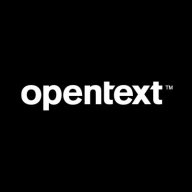

Microsoft 365 Business and OpenText Content Management compete in the document and productivity management category. Microsoft 365 Business seems to have the upper hand due to its integration capabilities and ease of use, although both products offer valuable features for their respective audiences.
Features: Microsoft 365 Business includes a comprehensive suite of applications such as Word, Excel, and PowerPoint, along with tools like Teams for collaboration and OneNote for note-taking. It offers seamless integration with cloud storage, allowing users to access and collaborate from any device. OpenText Content Management offers enterprise-grade document storage, compliance features, and advanced metadata capabilities. It emphasizes robust security and permissions management, essential for large organizations with detailed document control needs.
Room for Improvement: Microsoft 365 Business could improve cross-platform integration, fix issues within Skype and Teams, and simplify its licensing. There's also a need to address its pricing structure. OpenText Content Management requires enhancements in its user interface, support services, and workflow streamlining. Users have noted the need for better user guides and more efficient document management processes.
Ease of Deployment and Customer Service: Microsoft 365 Business benefits from its flexible cloud-based deployment and generally responsive customer service, though support experiences can vary. Users often find solutions via extensive online resources. OpenText Content Management has more complex deployment, often favoring on-premises and hybrid cloud setups. Customer support may be less consistent, with room for improved responsiveness and expertise.
Pricing and ROI: Microsoft 365 Business is competitively priced with a broad feature set, although costs can rise with additional features or licenses. Its ROI is favorable, especially noted for streamlined operations and enhanced remote work capabilities. OpenText Content Management, while effective for document management, has a higher cost, potentially deterring medium-sized businesses. Its pricing is viewed as justifiable due to strong data management capabilities and organizational benefits.
It also provides good security and the ability for normal users to create simple applications without needing developers.
ROI may be very short if you use OpenText Content Management system effectively.
We have had good support from Microsoft, with responsive and well-trained staff who are very polite.
It would be beneficial if Microsoft had more expert customer support staff.
I haven't needed any support from Microsoft with Microsoft 365 Business; in my three years, I haven't encountered any instances.
The staff lacks adequate knowledge.
In prior years, support was really great; opening a ticket resulted in fast responses and proactive problem-solving.
There is not enough documentation about scaling, which makes it difficult to enhance or modify environments without significant effort.
The file-sharing feature in Microsoft 365, specifically using OneDrive, is unreliable.
It works properly, and I have never needed to contact support.
The stability of Microsoft 365 Business is rated nine out of ten.
The product is quite stable if it is well-managed.
Microsoft has very poor security, and Defender is ineffective.
The comprehensive nature of the solution justifies the cost.
Once you start using this product, it becomes difficult to switch to alternatives.
The expectation from the customer versus the product explanation needs alignment.
Another important aspect is the improvement of the artificial intelligence already embedded in OpenText Content Management solution.
Microsoft 365 is cost-intensive, and alternate options like OpenOffice, LibreOffice, or Google Workspace are not as expensive.
The solution might be considered pricey for some, however, the comprehensiveness of the suite justifies its cost.
It could be more affordable.
If you compare it to an archiving solution and you are using content management only for archiving, the cost of the license may seem too high, as you are paying for a license that not only includes archiving but also controls the full life cycle of information, connects with SAP and Salesforce, features a native connection with Office 365, and supports parallel editing.
The cost is a significant factor that may deter medium-sized businesses from using OpenText extended ECM.
Using Teams helps our team's productivity because rather than having to make a proper chart again, if I am reviewing someone else's work and I find a mistake, I'll just do it in Excel and it automatically gets updated in the PPT.
Whether users are in the office, outside, or at home, they remain connected which makes the work proceed efficiently.
The subscription model of Microsoft 365 Business is beneficial since it provides continuous updates, including functional updates and transformations of the product.
The seamless integration between SAP and OpenText offers a 360-degree view of documents, facilitating a full-text search capability.
OpenText Content Management has a feature that is unique in the market, which is the deep integration with leading applications, allowing reflection of the connections between different processes and objects in applications such as SAP, SuccessFactors, or Salesforce, visible inside the document management application.
| Product | Market Share (%) |
|---|---|
| Microsoft 365 Business | 2.1% |
| OpenText Content Management | 2.0% |
| Other | 95.9% |


| Company Size | Count |
|---|---|
| Small Business | 111 |
| Midsize Enterprise | 44 |
| Large Enterprise | 100 |
| Company Size | Count |
|---|---|
| Small Business | 13 |
| Midsize Enterprise | 4 |
| Large Enterprise | 11 |
Microsoft 365 Business offers a comprehensive suite of tools for communication, collaboration, and productivity, providing seamless integration and cloud accessibility across apps like Teams, Outlook, and SharePoint, ensuring businesses can operate efficiently and flexibly.
Designed for modern work environments, Microsoft 365 Business enhances productivity through apps like OneNote and Power BI. Its integration across Word, Excel, and PowerPoint enables efficient data management and communication across devices, boosting workflow and collaboration. Despite some limitations in platform integration and scalability, its user-friendly interface, high security, and automatic updates promote broad adoption. Issues with interface complexity, licensing, and responses from technical support require attention. Enhanced AI integration and reduced resource consumption could further improve user experience.
What are the key features of Microsoft 365 Business?Microsoft 365 Business is implemented in diverse industries, supporting sectors like education, finance, healthcare, and tech. It enhances collaboration in remote work environments, enabling secure data management in compliance-focused industries. Features like enhanced email management and cloud-based document storage are leveraged to improve operations and efficiency.
OpenText Content Management offers seamless document storage and advanced search features. Ideal for organizations needing integration with SAP and other applications, it enhances workflows while ensuring security and compliance across multiple platforms.
OpenText Content Management stands out with its advanced integration capabilities, allowing seamless connectivity with SAP and other applications. Its enhanced security and permission systems safeguard information, vital for industries like banking, utilities, and oil & gas. Metadata categorization and customizable workflows aid in managing complex document lifecycles. Although improvements in visibility and integration with external tools are needed, the platform provides powerful collaboration tools, enhancing productivity. Users leverage document retention and WebReports features to ensure compliance. Challenges with support, performance during peak times, and architecture complexity are noted. Automation features and analytics require enhancement, alongside more user-friendly SmartUI and record management functionalities.
What key features define OpenText Content Management?OpenText Content Management is widely utilized in sectors such as banking, utilities, and oil & gas. It is implemented to manage software development projects, engineering documents, and workflow automation. Organizations leverage OpenText Extended ECM for document lifecycle management, post-project archiving, and records retention. Integration with platforms like ServiceNow allows efficient handling of document management across global operations, supporting information governance, tax return compilation, and capital projects.
We monitor all Content Collaboration Platforms reviews to prevent fraudulent reviews and keep review quality high. We do not post reviews by company employees or direct competitors. We validate each review for authenticity via cross-reference with LinkedIn, and personal follow-up with the reviewer when necessary.